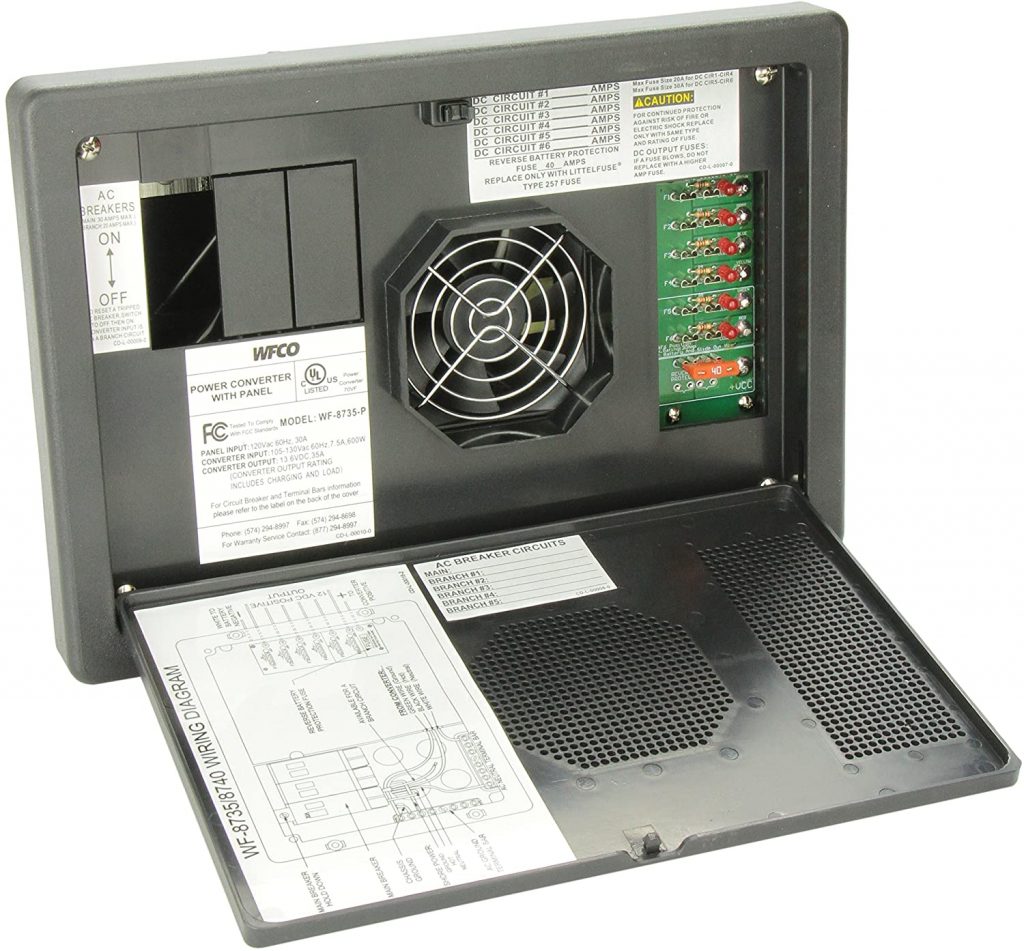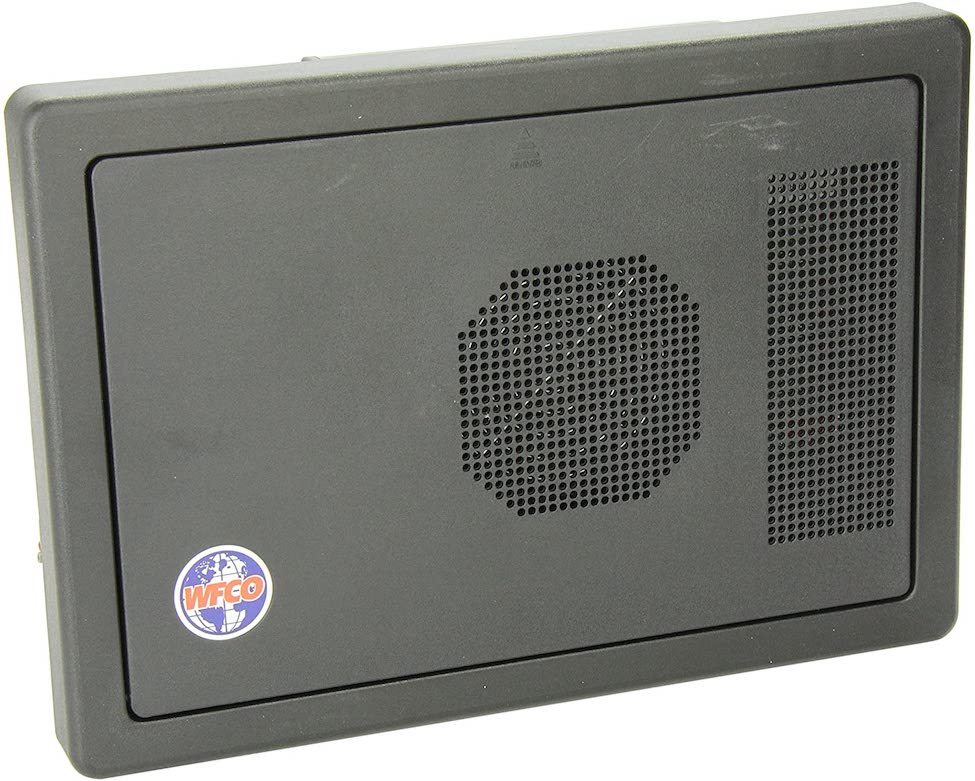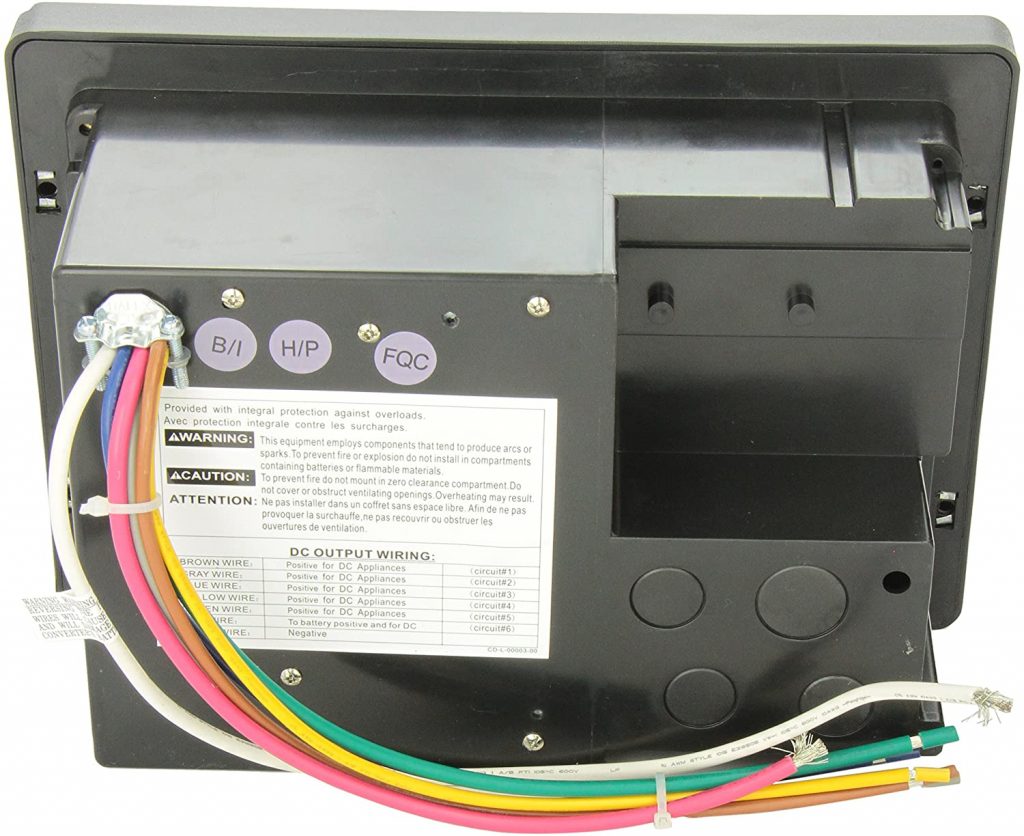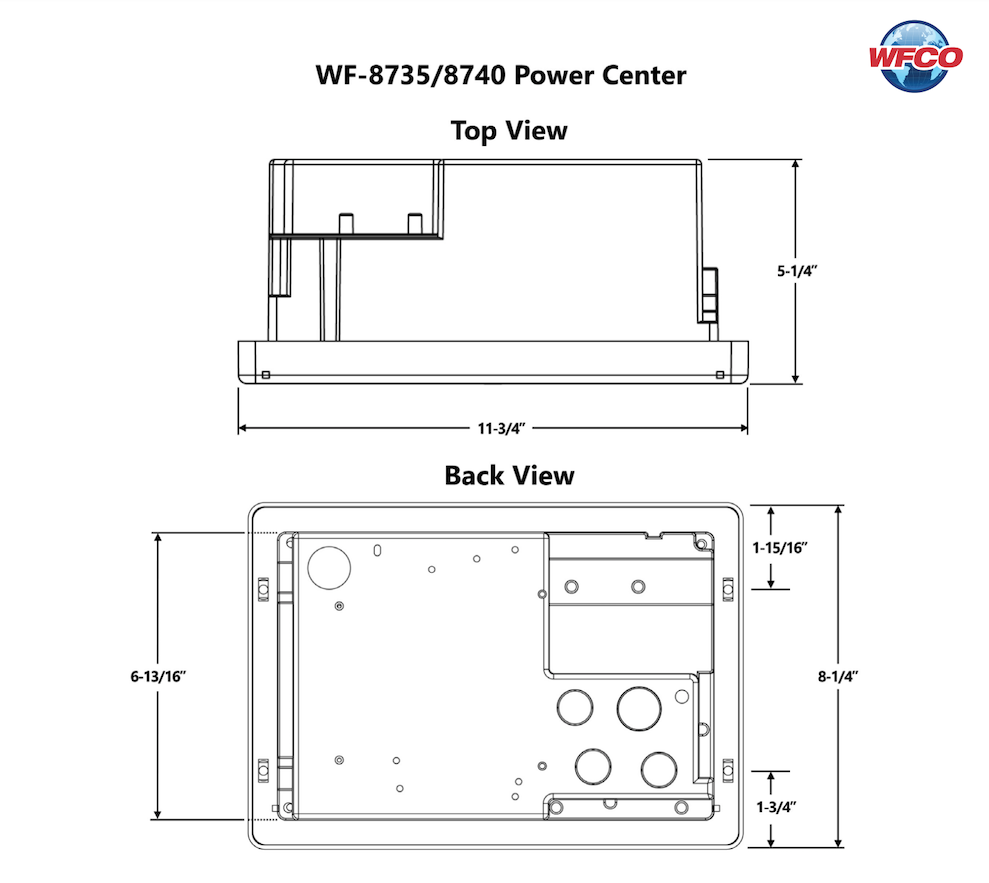One of the common questions I get it about power. This tends to happen since most Tiny Houses (or trailers, skollies, housetrucks etc) are neither completely RVs nor Houses. So how do you handle having both AC & DC circuits? When we first started out in Tiny House land, we were using standard residential sub-panels with 8 breaker slots, plus a secondary DC panel (usually a boat style) to handle any DC circuits. Then we tried out an RV load center and saved ourselves a lot of hassle.
The term Load Center took some getting used to, but basically just means the “Power Center” or “Combined AC/DC Breaker Panels + Battery Charger”. It’s a nice, compact unit that brings in the AC power from outside, runs it into a mini AC breaker panel with a small number of slots for AC circuit breakers, then also has the electronics included to convert some of that AC power into DC power and supply it to a number of DC circuits protected by auto-style fuses. It also uses that power to charge a battery, if you’ve installed one, solving a whole bunch of problems at once. It’s got a cover to keep it clean looking and an internal fan to keep the power converter cool.
Some parts you may need:
We like use a load center from WFCO Electronics which is used by many RV manufacturers. For our 30A, 120V AC builds, we use the WFCO WF8735PB which gives you 35 amps of DC power to play with. It technically has only 3 AC circuit breaker spots, but you can get “twin style” breakers that fit 2 separate circuits into one spot. You have to reserve one of your “six” slots for the main power-inlet breaker, but it leaves you with 5 AC circuits, which is just about perfect for Tiny build!
It can be a bit tricky to find a 30A/20A twin breaker but the 15A/15A twin breakers are everywhere. You can use a number of different brands of breakers, for example the Siemens 30/20 unit is a Q3020 or the Square-D style is an HOMT3020. (Note! You need a 30/20 not a 20/30 so you can run the power feed into the left hand side of the unit!) With one 30/20 and 2 x 15/15 you can run a 20A circuit for your kitchen plugs and still have 4 x 15A circuits for everything else. Keep in mind that one of those circuits will also be feeding your AC to DC converter but most of your DC loads add up to maybe 3 amps AC of draw. Then you also have 5 different DC circuits to run your LED lights, DC appliances, propane detector etc. The 6th DC circuit is saved for charging your battery.
You’ll need some ATO/ATC style fuses so as to have the right amp rating for each circuit and replacements if you blow a fuse, as it’s not a ‘flip it back’ style like the AC circuit breakers. You don’t need many, but Amazon only seems to sell 100 packs and they’re cheap..
If you’ve got a 30A 120V RV power inlet and some 10 gauge wire, you have everything you need to run from your outside plug to your power center, save a few connectors.
Specs on the power center we use:
https://wfcoelectronics.com/product/wf-8735-35-amp/
Photos:



Dimensions:

